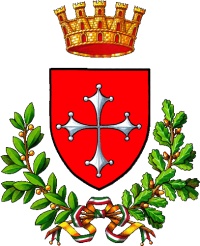
Pisa and its patron saintSaint Ranieri17th June | ||
| | ||
Saint Ranieri | ||
| Ranieri degli Scaccieri was born in Pisa in 1118 from a quite well off merchant family. Although his family tried to make him study with the help of a priest, who taught him the Christian principles, Ranieri spent his life until the age of 19 giving himself to a frivolous life, playing music with the lira and living a carefree life. One day Ranieri met a hermit, Alberto from Corsica, and was so impressed by him that decided to change and lead a virtuous life, following his master, Jesus. At 23 Ranieri gave all his riches to the poor. One day Ranieri had a vision and decided to go to Jerusalem, where he lived as a pilgrim for thirteen years, living with other pilgrims, eating only twice a week, and began to become known for his miracles. Back in Pisa in 1154, Ranieri went to live in the same monastery, of San Vito, where he had met Alberto. He became famous for his habit of giving holy bread and water, which operated miracles, to those who asked for it.  St. Ranieri Praying in the Temple, Mid 14th Century Andrea Di Bonaiuto Buy at AllPosters.com More pictures of St. Ranieri | ||
| To Pisa residents, he was already a saint during his life. Ranieri died on 17th June 1161 and only one year later a followers of his wrote his biography. In 1632 Saint Ranieri was elected the patron saint of Pisa. During the translation of Saint Ranieri's body to a new chapel in 1668, a big celebration took place with an Illumination of the city, according to a previous tradition. Now every year, all buildings along the Arno river are lit with thousands of small candles, about 70,000 of them mounted on frames, which reflect in the river water, creating and enchanting, unique scenery. It is called the Luminara, and takes place the night between 16th and 17th June. The celebrations continue with the Palio di San Ranieri, a regatta where four boats (for the four city districts) compete and at the end of the race one of the rowers has to climb a cable to the top of a ten metre mast and grab a banner. The winner will receive a couple of ducks! | ||
| ||
as seen by Viola in music, Everything about the viola | ||
| ||
| It was a Roman colony and later its most splendid time was between the 11th and 13th century, when it was very powerful politically as well as culturally and when its most beautiful monuments, such as the cathedral with the leaning tower, the Baptistery and the monumental cemetery, were built. This group of buildings compose the Piazza dei Miracoli (Miracles Square). The square had just been built when Saint Ranieri was born. The leaning tower of Pisa is actually a bell tower with seven bells. You can get to the top by climbing the 294 steps of the spiral staircase inside the tower. I remember when I did it, I was a bit disconcerted since the steps are worn-out by climbers and, because of the lean, while you proceed, you find yourself either glued to the inner wall or scarily close to the external openings! | ||
 More pictures of Pisa | ||
During this time Pisa was a maritime republic, together with the cities of Amalfi, Genoa and Venice, sometimes allied, other times fighting each other. This was also a time of wars against Arabs, of Crusades, that gave the opportunity to establish trade relationships in north African cities and in the Holy Land. For some time Pisa also conquered part of Sicily, Sardinia, Corsica and Balearic islands. In 1406 Pisa was conquered by Florence and lost its political importance. | ||
Famous people and things | ||
| The most famous person born in Pisa is the scientist Galileo Galilei who, among other things, discovered the satellites of Jupiter, studied the sun and planets movements and described the laws regulating the pendulum. The tradition says that in this latter study Galileo was inspired through the observation of an oil lamp oscillating in the cathedral. The so-called Lampada di Galileo (Galileo’s lamp) is kept in the cathedral, the Duomo, and you can still see it. Unfortunately for him, he was seen by the church as a heretic and forced to abandon his theories about the sun and the earth. | ||
| In Pisa there is an ancient University, founded in 1343, with Europe’s oldest Botanic Garden (1544). Another gem is the church of Santa Maria della Spina (Saint Mary of the thorn), owing its name to a relic kept there, supposed to be a thorn from the crown of thorns worn by Jesus on the cross. Then, if you are interested in these things, there is also another church much richer in relics, Saint Francis’ church, with a piece of Christ’s cross, the Virgin cloth, a small bone of Saint Anthony and a piece of the tunic used by Saint Francis.
| ||
Other important recurring events | ||
| ||
Cerca nel sito
For more information: Comune di Pisa Piazza XX Settembre 56100 Pisa - PI Tel.:+39 050 910350/910237 Fax: +39 050 910933 e-mail: tourist-point @ comune.pisa.it Visit the official website of the Comune di Pisa in English When you contact this comune let them know you found them on www.calendar-of-patron-saints-and-cities-in-italy.com Go from Pisa and its patron saint to the Tuscany region
|
